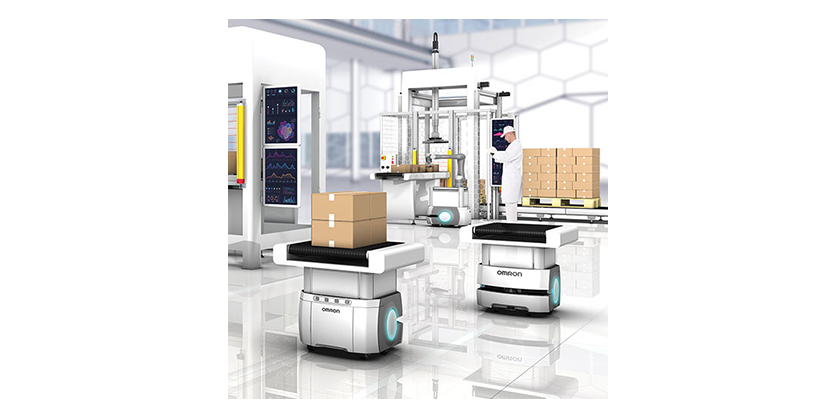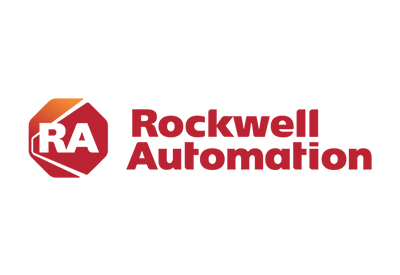Getting Started with Autonomous Mobile Robots: A Beginner’s Guide
January 2, 2024

The world of autonomous mobile robots (AMRs) is rapidly growing and provides businesses with a range of exciting opportunities to streamline processes and increase operational efficiency. If you are just getting started with mobile robots, it can seem daunting to know where to begin. Fortunately, this article will provide you with the necessary guidance, from identifying the best application for your business to understanding key considerations when choosing a robot, and common mistakes when deploying AMRs. By the end of this article, you will be well on your way to implementing an effective AMR strategy that will maximize results for your business.
Overview of mobile robots and their benefits
In recent years, Autonomous Mobile Robots (AMRs) have become a popular choice for businesses looking to reduce labor costs and increase efficiency. AMRs are equipped with sensors, cameras, and algorithms that allow them to accurately navigate complex environments while avoiding obstacles. These robots have become increasingly popular due to their ability to quickly complete tasks that would have previously taken human workers much longer.
AMRs can be used in a variety of industries such as manufacturing, logistics, healthcare, and retail, just to name a few. They can help reduce labor costs by automating tedious or repetitive tasks while improving safety due to their precision and accuracy. In addition, they can also be used for more novel purposes like data collection, surveillance, or even facility disinfection. For example, they can be used to record inventory of items, patrol large facilities to ensure they are secure or provide UV disinfection treatment throughout a facility to reduce the spread of germs.
The benefits of using mobile robots extend beyond cost savings and improved safety; they also provide opportunities for businesses to increase productivity by freeing up valuable resources, which could then be allocated towards more important tasks. This is especially beneficial in industries where labor shortages are an issue as it allows businesses to do more with less.
Overall, the use of autonomous mobile robots is revolutionizing the way businesses operate and providing them with new opportunities for growth and innovation. By understanding the basics of AMRs and their potential applications, readers will gain a better understanding of how these robots can be utilized in their own business operations in order to maximize results and enhance their user experience.
Many people know that AMRs can help improve their processes but don’t know how to begin
In today’s business climate, Autonomous Mobile Robots (AMRs) can offer an array of benefits to companies looking to streamline their operations. However, many don’t know how to begin taking advantage of this technology. The key is for businesses to first do their research into the different types of AMRs available and determine which best fits their application. It is important to consider the robot’s capabilities and limitations as well as what processes need automating for the implementation to be successful.
Once an application has been selected, companies must then plan out its deployment accordingly. This involves developing safety protocols, training staff members on its use, integrating it with existing processes, and ensuring there are no potential obstacles that could interfere with operation along its route. Additionally, any necessary changes or adjustments to workspaces or infrastructure should be considered when making these plans.
It’s also essential for businesses looking into AMR technology to have a clearly defined timeline in place when planning and testing prior to implementation in order for them to achieve the most success possible with their projects. Any help from professionals who specialize in robotics applications should be enlisted if needed as well. Finally, companies should take full advantage of all resources available from manufacturers and suppliers such as product support services or customer success teams. They can provide guidance on successful deployments and operations. This will aid them greatly in setting up their mobile robots properly and safely for optimal results down the line.
How to identify the best application
When selecting a mobile robot for a particular task, it is important to understand the scope of the job and identify key metrics that will measure success. Start by evaluating where you have the most pain points in your process, and/or where you’d like to make enhancements. If you have a lot of potential applications, begin by looking for areas that seem to be the most chaotic, disorganized or that create bottlenecks.
Common first time AMR users typically focus on applications such as movement of carts loaded with materials, line side delivery of materials, end of line transport of finished goods, or any application where something is being transported manually and the organization is struggling to maintain adequate staffing levels. Safety is also a big driver for first time AMR users. Converting the movement of heavy items to an automatic one can reduce or eliminate worker injury. Finally, consider what your longer-term needs are going to be, so that if the opportunity presents itself, you can make provisions in the current project to expand more easily in the future.
Most organizations have many applications that are well aligned as good first-time applications, and there is no real right or wrong one to choose. The most important thing to keep in mind is identify what you want to achieve with your project and which application is most suited to achieve that goal with an AMR solution. When businesses thoroughly evaluate and identify well aligned applications, they can ensure they are making an informed decision that aligns with their goals – ultimately leading them down a successful path with mobile robotics.
Key considerations when choosing a mobile robot
Choosing an Autonomous Mobile Robot (AMR) requires careful consideration of a variety of important factors. The physical size and payload capacity of the robot are critical, as they will determine its ability to handle whatever tasks it is being used for. Additionally, the runtime per charge and charge time must be considered; this will inform how long the robot can work before needing to return to base for charging or battery replacement.
Furthermore, readers must consider support requirements for top modules such as vision systems, sensors and other devices that may be attached to the mobile robot. They should also look into integration with other AMRs if multiple robots are deployed simultaneously. To ensure safety during operation, certification requirements need to be assessed prior to deployment.
By taking these key considerations into account when selecting a mobile robot for their specific task or application, readers have the best chance of making an informed decision that aligns with their goals and ensures successful deployment of mobile robots. Doing so can help them get the most out of their investment in robotic technology, while also ensuring workplace safety at all times.
Common mistakes when deploying AMRs for the first time
When introducing Autonomous Mobile Robots (AMRs) for the first time, it is important to be aware of several common mistakes which could lead to hazardous situations or costly delays. For instance, mapping and map setup are essential for an AMR to operate efficiently. If this isn’t done correctly it can cause issues navigating reliably near obstacles or other mobile robots. It’s also crucial to consider the payload capacity of the robot; teams must ensure that the load does not exceed the robots capacity to ensure a safe operation and avoid unintentional damage to equipment.
In addition, modifications may be needed in order to support an automated process. This could involve creating designated areas for robotic navigation or making sure there is sufficient lighting across a warehouse or factory floor – all of which should be considered prior to installation and implementation of an AMR system. Furthermore, existing systems need to be tested for compatibility with any new technology in order to avoid problems further down the line.
Safety protocols must also be established ahead of deployment to safeguard workers when operating alongside robots on a daily basis. Comprehensive training should also be provided so that team members understand their roles within a robotic environment. They can protect themselves from potential hazards and maintain efficient operation of deployed AMRs.
By evaluating these common mistakes before launching an Autonomous Mobile Robot system, businesses can avoid costly missteps which could put their employees at risk or impede production timelines due to inadequate planning. Are you ready to begin (or advance) your journey with Mobile Robots?
Next Steps
Reach out to Omron’s team of robot application experts who can work with you to identify the best solution to address your specific needs.
Related Story
Omron’s Robotic Solutions: Thousands of Possibilities
Robots can improve the productivity of many industries and processes. They can handle a variety of tasks, such as laborious or repetitive work, and can dramatically improve processes in industries such as machine tending, assembly, packaging, and other manufacturing activities. Moreover, they can handle routine operations, allowing employees to perform higher-value tasks.
This article will look at a selection of Omron’s robots and robotic solutions, such as autonomous robots and collaborative robots, and will explore how these products can be integrated into facilities to improve productivity. It also discusses the next evolution in factory automation: MoMa’s, or Mobile Manipulators – the growing trend of having collaborative robots mounted onto AMRs to achieve new levels of automation.





